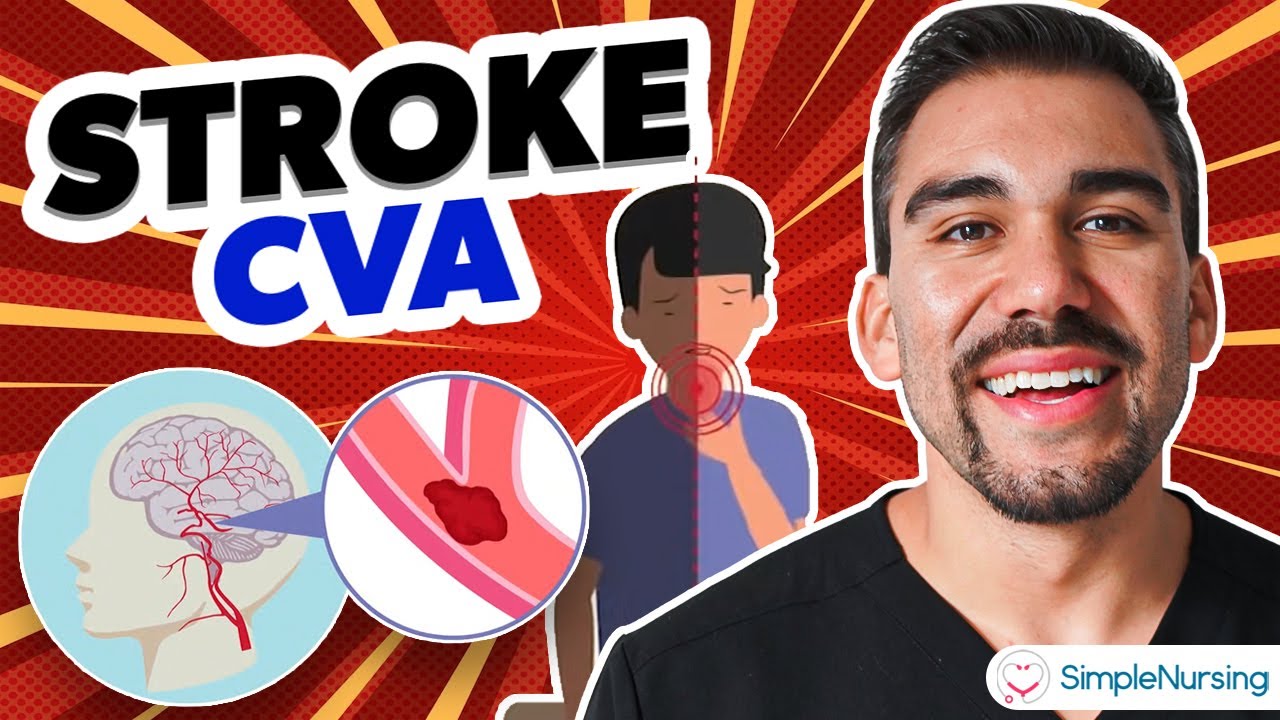How to formulate Pathophysiology Mind Map
Summary
TLDRThis video explains how to create a pathophysiology mind map, focusing on ischemic stroke and acute glomerulonephritis as examples. It outlines essential components like etiology, pathophysiologic processes, signs and symptoms, diagnostic tests, treatments, and nursing diagnoses. Key factors such as predisposing and precipitating factors are emphasized, alongside their relationship with disease progression. The video encourages students to incorporate patient-specific data when building the mind map, helping them understand how diseases manifest and progress through a systematic cause-and-effect approach. The mind mapping process aids in visualizing complex medical concepts for better comprehension.
Takeaways
- 😀 A pathophysiology mind map organizes and sorts concepts related to a disease, including its causes, symptoms, and complications.
- 😀 The mind map should clearly show the **cause-and-effect** relationships, sequencing the disease's progression from its cause to its effects.
- 😀 Key elements to include in a pathophysiology mind map are the **etiologic factor**, **pathophysiologic process**, **signs and symptoms**, **diagnostic tests**, **treatments**, and **nursing diagnosis**.
- 😀 **Etiologic factors** include predisposing factors (e.g., age, gender, family history, lifestyle) and precipitating factors (e.g., stress, pre-existing conditions).
- 😀 When creating the mind map, only include **relevant factors** specific to your patient's case, based on their history and demographic data.
- 😀 The **pathophysiologic process** describes the disease's internal mechanisms, such as how the cause leads to certain symptoms or conditions.
- 😀 Signs and symptoms in the mind map should be based on the **patient’s current presentation**, not general textbook lists.
- 😀 **Diagnostic tests** should be aligned with the disease process and patient’s symptoms, like using **urinalysis** to confirm hematuria or **CBC** for red blood cell levels.
- 😀 The mind map should include treatments prescribed by the doctor, focusing on what's relevant for the patient's specific condition.
- 😀 **Nursing diagnoses** are connected to the signs and symptoms in the mind map, for example, linking fluid retention (edema) to a diagnosis of **fluid volume excess**.
- 😀 A well-structured pathophysiology mind map helps students visualize and better understand how different disease factors interact and contribute to patient care.
Q & A
What is the primary purpose of a pathophysiology mind map?
-The primary purpose of a pathophysiology mind map is to systematically lay out and sort out concepts about a disease, including its causes, progression, signs, symptoms, complications, and related factors, to understand how the disease develops and affects the body.
What are the key elements to include in a pathophysiology mind map?
-The key elements to include in a pathophysiology mind map are the etiologic factors (causes), pathophysiologic processes, signs and symptoms, diagnostic tests, treatments, nursing diagnoses, and complications.
What are 'predisposing factors' in the context of pathophysiology?
-Predisposing factors are inherent characteristics or conditions of a person that increase their likelihood of developing a disease. These factors include age, gender, family history, race, obesity, and lifestyle.
How do 'precipitating factors' differ from predisposing factors?
-Precipitating factors are triggers or events that directly initiate or exacerbate the disease process, whereas predisposing factors are inherent characteristics that make a person more susceptible to the disease.
What is an example of a precipitating factor in the case of ischemic stroke?
-An example of a precipitating factor for ischemic stroke is stress, which can trigger a stroke in individuals predisposed to it by other factors like hypertension or a sedentary lifestyle.
Why is it important to focus on the specific factors present in a patient's case when creating a pathophysiology mind map?
-It is important to focus on the specific factors present in a patient's case to ensure that the mind map is personalized and relevant, reflecting the patient's unique medical history and risk factors.
How does the pathophysiologic process relate to the manifestation of symptoms?
-The pathophysiologic process establishes a cause-and-effect relationship, explaining how and why symptoms manifest. For example, in acute glomerulonephritis, antigen-antibody complex formation leads to inflammation of the glomerular base membrane, causing hematuria and proteinuria.
When creating a pathophysiology mind map, how should signs and symptoms be selected?
-Signs and symptoms should be selected based on the specific case or scenario, focusing only on those that are present in the patient or specified in the scenario, rather than listing all possible symptoms.
What diagnostic tests are typically included in a pathophysiology mind map?
-Diagnostic tests in a pathophysiology mind map should include those that help confirm the disease and assess its severity. For example, urinalysis and complete blood count (CBC) are used to diagnose conditions like acute glomerulonephritis.
How can nursing diagnoses be integrated into a pathophysiology mind map?
-Nursing diagnoses can be integrated by linking them to the signs, symptoms, and complications. For instance, hematuria and proteinuria might be linked to the nursing diagnosis of ineffective tissue perfusion, and edema might be linked to fluid volume excess.
Outlines

このセクションは有料ユーザー限定です。 アクセスするには、アップグレードをお願いします。
今すぐアップグレードMindmap

このセクションは有料ユーザー限定です。 アクセスするには、アップグレードをお願いします。
今すぐアップグレードKeywords

このセクションは有料ユーザー限定です。 アクセスするには、アップグレードをお願いします。
今すぐアップグレードHighlights

このセクションは有料ユーザー限定です。 アクセスするには、アップグレードをお願いします。
今すぐアップグレードTranscripts

このセクションは有料ユーザー限定です。 アクセスするには、アップグレードをお願いします。
今すぐアップグレード関連動画をさらに表示

STROKE Lengkap - Klasifikasi, Patofisiologi, Skor Siriraj, Gajah Mada, Latihan Soal UKMPPD

Stroke Pathogenesis (with a focus on Ischemic Stroke)

Myocardial Infarction[Heart Attack]; Causes, Pathogenesis, Signs & Symptoms, Diagnosis & Treatment

Stroke CVA (Cerebrovascular Accident) Hemorrhagic, Ischemic NCLEX RN & LPN NURSING

What Causes a Stroke?

PANCREATITIS AGUDA FISIOPATOLOGÍA | GuiaMed
5.0 / 5 (0 votes)
